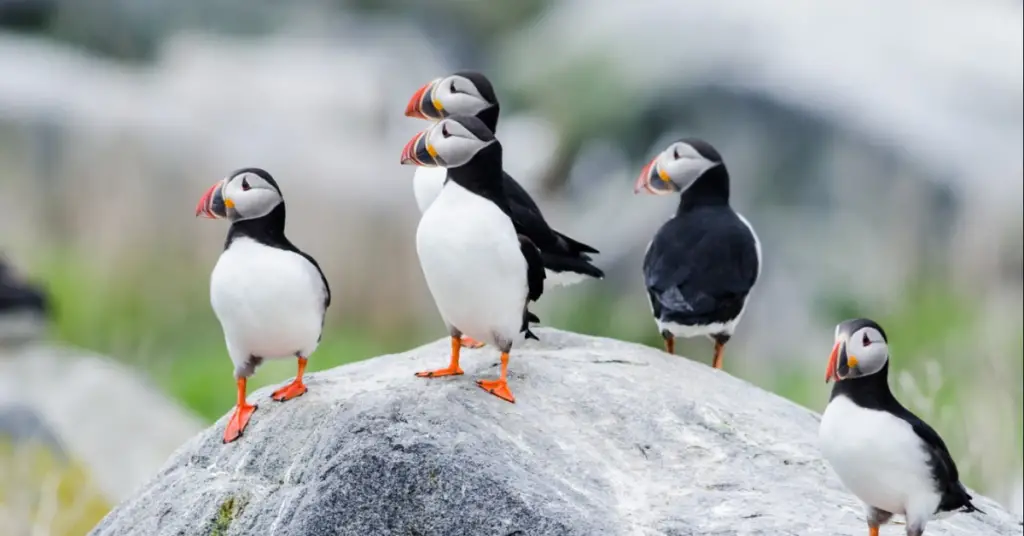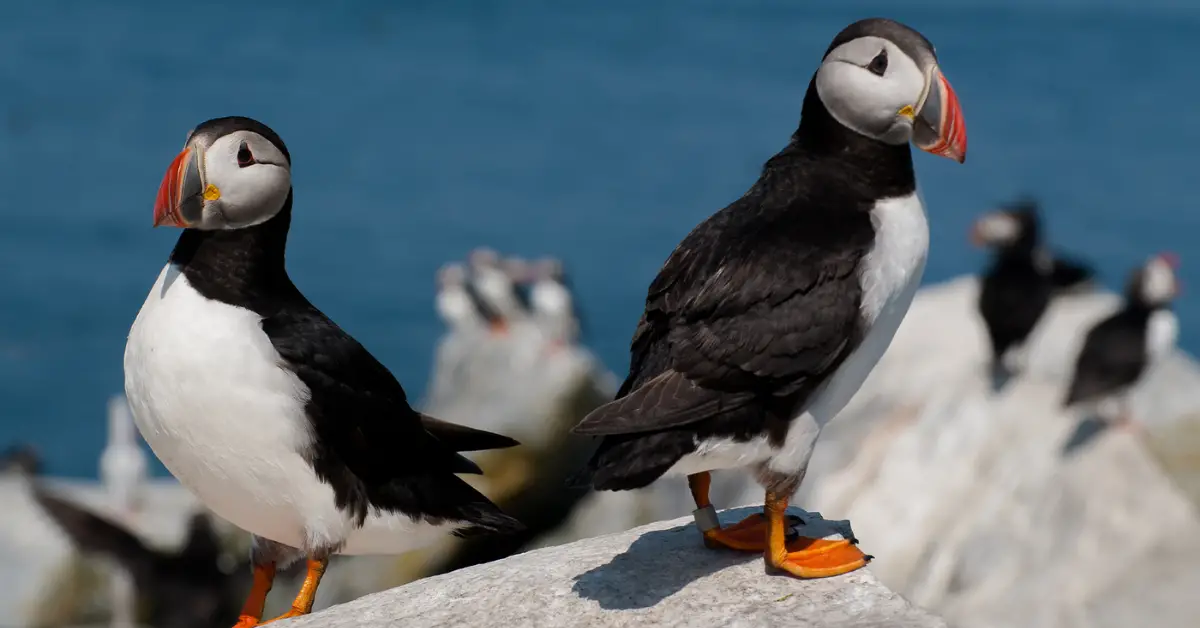Maine is home to the only puffin colony in the United States, and these fascinating seabirds are a major draw for wildlife enthusiasts each year. Once nearly extinct from the state’s coast, puffins now thrive on Maine’s rocky ocean islands, where you can spot them starting as early as April.
These islands are home to the only puffin colonies in the U.S., marking the southernmost edge of their range. With the success of Project Puffin, a conservation initiative aimed at restoring puffins to the area, the birds now flourish here, and it has become a prime spot for those looking to catch a glimpse of these charismatic birds in action.
The best time to visit Maine for puffin watching is from April through August, during the puffins’ breeding season. The birds return to the islands to find mates and nest. This seasonal return to the breeding grounds provides an incredible opportunity for birdwatchers and photographers to observe these unique creatures in their natural habitat.
Puffins, often referred to as “comical-looking seabirds,” are known for their distinctive appearance. These birds are short and stocky, with stubby wings that make them look a little clumsy on land. During the breeding season, puffins sport a striking appearance with black wings, a white belly, and gray-and-white cheek patches.
The most eye-catching feature of puffins is their colorful beak, which has red-orange, blue-grey, and yellow stripes that make them stand out among other seabirds. Their bright orange legs and feet complete their colorful appearance, adding to their appeal. It’s easy to see why people find puffins so charming.
Although Maine is home to puffins, the population here is quite small, representing only 1% of the global puffin population. Puffins are more commonly found in countries like Canada, Iceland, Greenland, Norway, and Scotland, which collectively support a much larger number of puffins. In fact, Iceland alone is home to about half of the world’s puffin population. Despite their relatively small presence in Maine, these puffins play a vital role in the local ecosystem, and seeing them is a rare and special experience for anyone visiting the area.

In Maine, puffins prefer to nest on rocky, isolated islands. These islands are typically far from the mainland and provide the perfect environment for puffins. The boulders on these islands help create safe nesting areas away from predators.
Puffins have been recorded nesting on seven islands in Maine, with the largest colonies located on Matinicus Rock, Eastern Egg Rock, and Seal Island. There is also a significant colony on Machias Seal Island, which is located near the Maine-New Brunswick border. These islands provide the ideal habitat for puffins to breed, raise their chicks, and socialize with others in their colonies.
Puffins spend most of their lives at sea, only returning to land to breed. During their time on the ocean, puffins are excellent swimmers, diving for fish and other marine creatures. When it comes time to breed, however, puffins return to the same islands where they were born to find mates and start their families. This tradition of returning to their birthplace to breed is a fascinating aspect of puffin behavior, and it offers birdwatchers a rare opportunity to see these birds up close during the breeding season.
The peak time to see puffins in Maine is June to July, when they are most active on their nesting islands. However, tours are available from May through August, offering opportunities to see puffins at various stages of their breeding cycle. According to Grey Havens Inn in Georgetown, Maine, June and July provide the best chances for puffin viewing, with puffins actively engaged in courtship, nest-building, and raising their chicks.
If you want to see puffins in person, Eastern Egg Rock is one of the most popular destinations for puffin watching. Located just six miles from the shore, this island is accessible by boat from Boothbay Harbor or New Harbor. National Audubon’s Project Puffin runs guided tours to the island, where visitors can learn about the birds and their successful restoration efforts in Maine. These tours provide an informative and engaging way to witness the puffins and their fascinating behavior up close.
In addition to Eastern Egg Rock, puffins can also be spotted on Seal Island, Matinicus Rock, and other islands like Machias Seal Island and Petit Manan Island. Each of these locations offers its own unique viewing experience.
If you want to get an even closer look at the puffins, Machias Seal Island is the only location where visitors can land on the island and observe the birds at a very close range. This offers an exciting opportunity for wildlife photographers and birdwatching enthusiasts alike.
Despite their success in Maine, puffins continue to face significant challenges. They were once nearly wiped out in the state due to hunting for their meat and feathers, which almost eradicated them from the region.
However, with the efforts of Project Puffin, spearheaded by scientist Stephen Kress, puffins were brought back to Maine through innovative methods like the use of mirrors and recorded calls to attract the social birds to suitable nesting sites. These efforts have proven successful, but puffins still face major threats today.
Climate change is a major concern for puffins, as warming waters affect the availability of food sources. Puffins rely on fish, particularly herring, to feed themselves and their chicks. When fish populations fluctuate, puffins can struggle to find enough food. In 2021, the puffin population in Maine faced a setback when a decline in the availability of fish led to a dramatic drop in the number of chicks that survived. This highlights the vulnerability of puffins and the delicate balance required to maintain their populations.
To help protect puffins, Maine Fish and Game recommends staying away from nesting islands during the breeding season. Visitors are encouraged to keep boat activity at least 660 feet away from puffin colonies to minimize disturbances. When landing on islands like Machias Seal Island, it is important to stay on designated paths and observe the puffins from behind blinds to avoid disturbing them.
Puffins are a treasured part of Maine’s natural heritage, and visiting these islands to see them in person is a unique experience that should be approached with respect for the birds and their environment. As conservation efforts continue to help puffins thrive, we can look forward to seeing these delightful birds return to Maine each year, delighting those lucky enough to witness their return.
Disclaimer: This article has been meticulously fact-checked by our team to ensure accuracy and uphold transparency. We strive to deliver trustworthy and dependable content to our readers.




